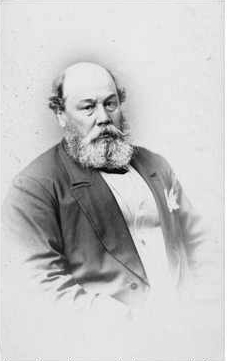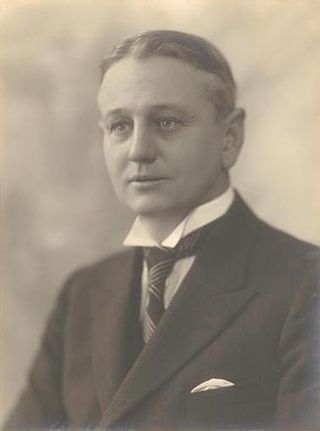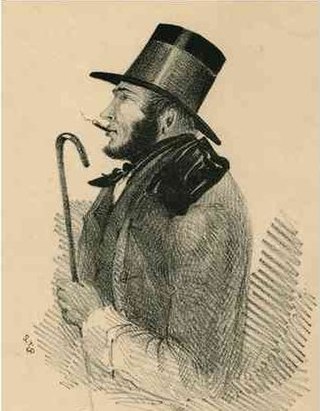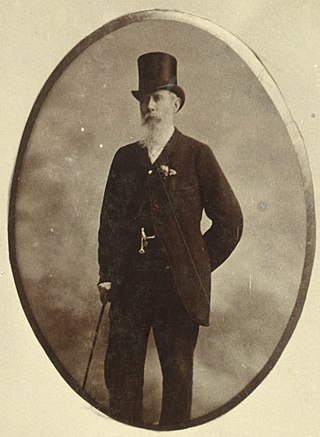Related Research Articles

Andrew John Southcott is an Australian politician and medical practitioner. He was the Liberal member for the House of Representatives seat of Boothby from the 1996 election until he stood down at the 2016 election.

George Marsden Waterhouse was a Premier of South Australia from 8 October 1861 until 3 July 1863 and the seventh premier of New Zealand from 11 October 1872 to 3 March 1873.

The South Australian Museum is a natural history museum and research institution in Adelaide, South Australia, founded in 1856 and owned by the Government of South Australia. It occupies a complex of buildings on North Terrace in the cultural precinct of the Adelaide Parklands. Plans are under way to move much of its Australian Aboriginal cultural collection, into a new National Gallery for Aboriginal Art and Cultures.

Tintinara is a town located in the Murray and Mallee region of the South East of South Australia.

Sir Arthur Blyth was Premier of South Australia three times; 1864–65, 1871–72 and 1873–75.

Henry Bull Templar Strangways was an Australian politician and Premier of South Australia.

Benjamin Boothby was a South Australian colonial judge, who was removed from office for misbehaviour, one of four Australian supreme court judges removed in the 19th century.

George Edwin Yates, often referred to as Gunner Yates, was an Australian politician. He was an Australian Labor Party member of the Australian House of Representatives from 1914 to 1919 and from 1922 to 1931, representing the electorate of Adelaide.

John Lloyd (Jack) Price was an Australian politician and trade unionist. He was an Australian Labor Party member of the South Australian House of Assembly for Port Adelaide from 1915 to 1925. He later served in the Australian House of Representatives for Boothby from 1928 until his death in 1941, but left the Labor Party and joined the United Australia Party, following the 1931 Labor split over government responses to the Great Depression.
Edward Gascoigne Collinson was a businessman and politician in the early days of the colonies of Western Australia and South Australia.

George Morphett was a settler in the colony of South Australia, and younger brother of John Morphett.

John Lindsay was a South Australian businessman and politician.
The First Reynolds Ministry was the 5th Ministry of the Government of South Australia, led by Thomas Reynolds. It commenced on 9 May 1860, following Reynolds' defeat of the Hanson Ministry on a confidence vote in the House of Assembly. The ministry was defeated in May 1861, but Reynolds' opponents were unable to form government, and he formed the reconstituted Second Reynolds Ministry on 20 May 1861.
The Second Reynolds Ministry was the 6th Ministry of the Government of South Australia, led by Thomas Reynolds. It commenced on 20 May 1861, when Reynolds succeeded in reconstituting his ministry and retaining power after the defeat of the First Reynolds Ministry. The ministry resigned in October 1861 when Reynolds was unable to reconstruct a ministry following the resignation of John Morphett as Chief Secretary. It was succeeded by the First Waterhouse Ministry, which was specifically constructed as a short-term ministry to deal with the matter of dissident Judge Benjamin Boothby, on 8 October.
The Second Waterhouse Ministry was the 8th Ministry of the Government of South Australia, led by George Waterhouse. It commenced on 17 October 1861, when George Waterhouse, who had led a nine-day temporary ministry to deal with dissident judge Benjamin Boothby, won support to remain Premier with a reconstituted ministry. The ministry resigned in July 1863 after nearly being defeated on a budget motion, passing only with the Speaker's casting vote on a procedural basis. It was succeeded on 4 July by the First Dutton Ministry, another temporary ministry headed by Francis Dutton, who had moved the vote to bring down the Waterhouse ministry.
The First Dutton Ministry was the 9th Ministry of the Government of South Australia, led by Francis Dutton. It commenced on 4 July 1863, when Dutton, who had moved the motion to oust his predecessor, was sworn in to lead what was reported to be an interim ministry to deal with the Tariff Bill. However, the ministry was defeated on a series of adjournment votes on its first sitting day in parliament, and announced their resignation for lack of the parliament's confidence. Randolph Isham Stow was sent for but failed to win support to succeed Dutton, and with former Premier George Waterhouse and Arthur Blyth both lacking support, Henry Ayers was finally sent for and sworn in heading the First Ayers Ministry on 15 July.
The Second Ayers Ministry was the 11th Ministry of the Government of South Australia, led by Henry Ayers. It commenced on 22 July 1864, when Ayers succeeded in reconstituting his ministry following its defeat on a no-confidence motion. It collapsed within days when both the new ministers, William Milne and Randolph Isham Stow, resigned, necessitating the resignation of the entire ministry. It was succeeded on 4 August 1864 by the First Blyth Ministry.
The First Blyth Ministry was the 12th Ministry of the Government of South Australia, led by Arthur Blyth. It commenced on 4 August 1864, when Blyth succeeded in forming a ministry following the resignation of the Second Ayers Ministry. It was succeeded by the Second Dutton Ministry on 22 March 1865, when Francis Dutton won the support of the new parliament that had been elected at the 1865 election.
The Corporate Town of Davenport was a local government area in South Australia that existed from 1887 to 1932 on land now located within the suburb of Port Augusta.
The District Council of Port Germein was a local government area in South Australia, centred on the town of Port Germein. It was gazetted on 5 January 1888 under the provisions of the District Councils Act 1887 and encompassed the hundreds of Baroota, Wongyarra, Booleroo, Telowie, Darling and Appila. It replaced an abortive earlier municipality, the Corporate Town of Port Germein, which had been established on 15 September 1887 when residents, concerned about increased taxation and their interests being lost in a broader shire under the forthcoming reforms, decided to incorporate the town. The local residents reportedly regretted the decision, and when the Act passed late in the year creating the new District Council, state parliament agreed to amalgamate the Corporate Town into the new municipality.
References
- ↑ "Statistical Record of the Legislature, 1836-2009" (PDF). Parliament of South Australia. Archived from the original (PDF) on 11 March 2019. Retrieved 8 October 2015.
- ↑ "THE NEW MINISTRY". South Australian Register . Adelaide. 9 October 1861. p. 2. Retrieved 8 October 2015– via National Library of Australia.
- ↑ "No title". The South Australian Advertiser . Adelaide. 9 October 1861. p. 2. Retrieved 8 October 2015– via National Library of Australia.
- ↑ "THE NEW MINISTRY". Adelaide Observer . 12 October 1861. p. 5. Retrieved 8 October 2015– via National Library of Australia.
- ↑ "THE MINISTRY". Adelaide Observer . 19 October 1861. p. 5. Retrieved 8 October 2015– via National Library of Australia.